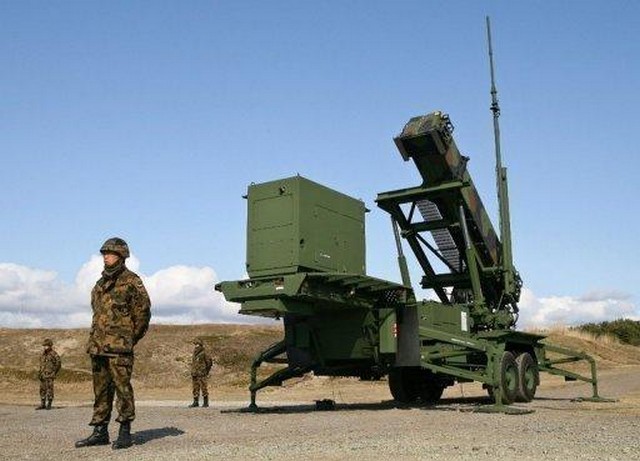By Countercurrents Collective
The Japan government approved on December 21, 2020 a record defense budget for fiscal 2021 totaling ¥5.34 trillion ($51.7 billion), as it seeks to introduce new standoff missiles capable of attacking enemy vessels from outside their firing range amid growing threats from China.
The draft budget is up 0.5% from fiscal 2020, including outlays linked to hosting the U.S.’ military bases, and has hit a record high for the seventh consecutive year as the country boosts its ability to deal with China’s growing maritime assertiveness and North Korea’s missile and nuclear threats.
Under the administration of Prime Minister Yoshihide Suga for the first time, the defense budget has grown for the ninth straight year. Suga has pledged to advance the course set by his long-serving predecessor Shinzo Abe.
The Defense Ministry secured ¥33.5 billion for the development of the Japan-made standoff missiles. Opposition lawmakers have raised concerns over the development, saying possessing missiles that could have the capability to strike enemy bases would run counter to the country’s war-renouncing Constitution and exclusively defense-oriented policy.
Defense Minister Nobuo Kishi has said Japan has to “respond” to China’s increasing naval activities around southwestern islands, while ensuring the safety of the nation’s Self-Defense Forces, and that standoff missiles are vital.
It is expected to take five years to develop the missiles. The ministry plans to extend the firing range of surface-to-ship missiles it is already developing to an anticipated 900 kilometers.
The ministry also earmarked ¥1.7 billion for preparations to build two new Aegis naval vessels.
However, the estimated cost to build the ships will be more than ¥500 billion, which is ¥100 billion more than the scrapped plan. Building the vessels will also take five years.
The government has also decided to spend ¥57.6 billion developing a next-generation fighter jet to replace the Air Self-Defense Force’s aging F-2 aircraft, and will allocate ¥15.5 billion separately for related research. Mitsubishi Heavy Industries Ltd. will lead the project with the support of Lockheed Martin Corp.
Meanwhile, the ministry postponed budget allocation for upgrades to F-15 fighter jets that would allow them to carry long-range cruise missiles due to ballooning costs. The upgrade was also aimed at protecting Japan’s southwestern island chain.
In new domains, the ministry allocated ¥119.1 billion for space-related activities. The budget includes funding for research on using an optical telescope to monitor unidentified objects and satellite constellations in order to detect hypersonic weapons.
Such weapons, capable of gliding faster and lower than ballistic missiles, are being developed by China and Russia.
To protect the nation’s cybersecurity, the ministry plans to spend ¥30.1 billion on plans such as setting up a new unit of the SDF that will consist of around 540 members. A separate team will be set up to shield defense-related companies from cyberattacks.
The draft budget includes ¥2.8 billion for research on a system to shoot down aerial threats, including drones, with a high-power laser.
The ministry has also set aside ¥400 million to test next-generation 5G technology.
China plans to raise its military spending 6.6% this year, the smallest increase in three decades.
An earlier report said:
Japan’s Defense Ministry originally asked for a 8.3% budget increase in 2020, its largest rise in more than two decades.
Stephen Nagy, senior associate professor at the Department of Politics and International Studies at Tokyo’s International Christian University, said the expansion of Japan’s military budget would match rapid military growth by other regional powers.
China builds more ships every year than the entire United Kingdom has in its forces,” Nagy said. “Since 2000 it’s been about a 10% increase in the Chinese military budget every year, so Japan’s increase is driven by China’s broad-based expansions of its military footprint in the region and globally.”
Heigo Sato, vice president of the Institute of World Studies at Tokyo’s Takushoku University, said the expanded budget was a response to the rising threat from North Korea, as well as pressure from U.S. President Donald Trump’s administration for Japan to shoulder more responsibility for its own protection.
“The era of not increasing the budget is over,” he said.
Strengthening U.S. ties
In the face of China’s rapid military modernization, Japan has been building closer ties with the U.S. and its allies in the Asia Pacific.
In July, the U.S. government approved the sale of more than 100 F-35 fighter jets to Japan, which Washington claimed would “support the … national security objectives” of America.
Nagy said that with the U.S. economy damaged by the Covid-19 pandemic, there was likely to be more pressure for Japan to increase its defense spending and take a greater role in regional security in East Asia.
“(With this draft budget) Japan is saying … we’ll step up to the plate and increase our spending share to keep the US tethered to the region,” he said. “They’re willing to show their commitment to the alliance.”
21 December 2020
Source: countercurrents.org

